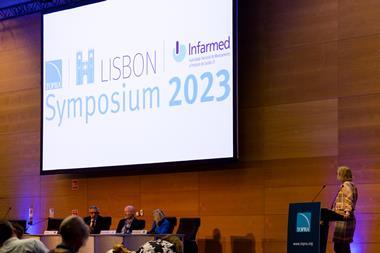As medicinal innovation evolves and becomes more complex, there is a need for agencies to support this innovation by establishing additional expedited pathway routes to improve drug development and its evaluation
The timely access to safe and effective treatment options for patients is at the core of regulatory agencies’ thinking when assessing and reviewing applications. With that in mind, agencies worldwide are continuously proposing and establishing different processes to optimise their reviews. Agencies also want to ensure that the approval of drugs that cover an unmet medical need or have high potential to improve patients’ outcomes are not delayed by standard procedures. As medicinal innovation evolves and becomes more complex, there is a need for agencies to support this innovation by establishing additional expedited pathway routes to improve drug development and its evaluation. Thus, ensuring access to innovative medicines that address patient needs.
This is not a new enterprise, and agencies have several established expedited pathways that are widely used by sponsors. The focus articles in this issue cover some of these expedited pathways, providing insight on its utility. Although some of these expedited pathways are similar across regions, there are specific idiosyncrasies depending on the agency in which they have been established. As an example, our readers will be familiar with the differences and similarities between EMA’s PRIME designation and FDA’s Breakthrough Therapy Designation (BTD), both of which support expedited drug development.
Our first focus article provides a comparison of the different conditional approval routes available in different regions, to allow patients with serious or life-threatening conditions earlier access to treatment, than under regular approval. These routes have been made available by different agencies at different times and have different country-specific caveats, which are described by the authors. They then focus on the current status of the accelerated approval pathway established by the FDA and the potential recommendations to improve it. This pathway has received much attention in the last couple of years. This is due to the FDA’s scrutiny of the approvals granted using this route that have not been yet converted to full approval, as well as the controversial approval of aducanumab using this route. A close follow-up on the outcomes of the reviews of accelerated approvals this year is recommended, to gain further insight regarding the FDA’s thinking about this pathway and its potential evolution.
The authors of the next focus article summarise different new regulatory tools that have been proposed by regulators, to accelerate development and facilitate drug access to patients and how they can support drug developers. Since the UK left the European Union, MHRA has embraced new opportunities to accelerate drug development. This includes the innovative licensing and access procedure (ILAP) to provide a framework for close collaboration between drug developers and the agency. Other tools discussed include the INTERACT meetings with FDA and the EMA Simultaneous National Scientific Advice meetings, for which the authors provide insights on its objectives, conduct and expected outcomes.
The last focus article provides an overview of the rare paediatric disease designation and priority review voucher programmes available in the US and its use since its creation ten years ago. These programmes provide incentives to sponsors of treatments targeting rare paediatric diseases, although its impact on boosting rare paediatric research is difficult to assess. A comparison of the rare paediatric disease designation with orphan drug designation and fast track designation is provided by the authors. This highlights the diff erent eligibility criteria between the schemes in terms of seriousness of the disease, population and level of data required to support the application. As the priority review voucher programme is set to expire in 2026, a discussion on its utility for ATMPs currently in development is also provided.
Expedited routes are at the core of regulatory science strategies. To support the accelerated delivery of safe and effective treatments to patients, both agencies and drug developers need to work closely together. This is to ensure that its purpose is maintained as the needs of innovative medicines evolve, being newly generated, revised or retired.








































